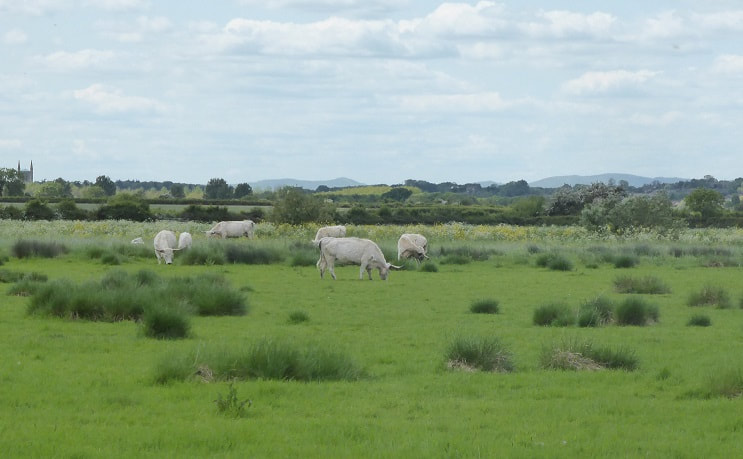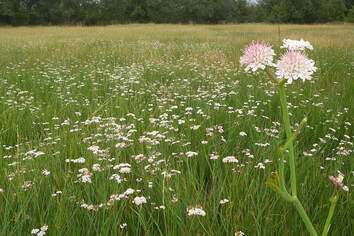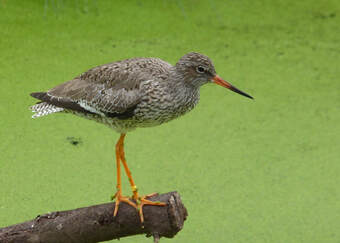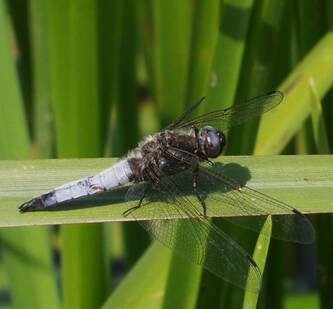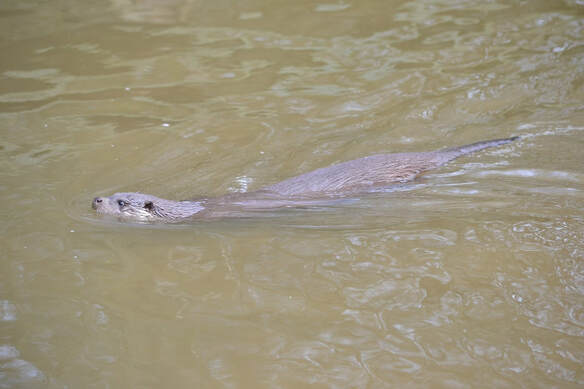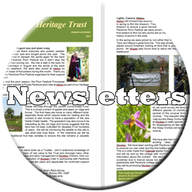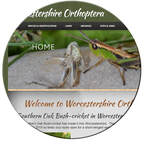Lower Moor River Meadows
|
Bridge Street, Lower Moor, WR10 2PL Grid reference SO975 467 Purchased in three lots, October 2006, April 2010 & July 2010. Access: There is a fenced permissive path along the Lench Ditch, and permissive access along the east bank of the Avon, joining with footpaths. Wading birds and ducks are easily disturbed so please keep dogs under close-control or on leads at all times. |
Note:
the car park at the end of Bridge Street is owned by Birmingham Anglers Association and is not a public car park.
the car park at the end of Bridge Street is owned by Birmingham Anglers Association and is not a public car park.
|
VLHT owns nearly 50 acres of floodplain meadows and pasture with hedges and ditches at Lower Moor.
Flowering plants are generally uncommon here but the rare Tubular Water-dropwort grows in abundance across the site especially in Sally’s Meadow; a four-acre meadow named in memory of Sally Roberts, daughter of the previous owner. A good range of sedges and rushes thrive in the wet ground. Meadowsweet grows in the ditches and Cow Parsley turns the river banks white in May. Lady’s Smock flowers across the site attracting Orange-tip butterflies to lay their tiny orange eggs in spring. |
This site is important for many bird species. Some of these use it as a summer breeding area, winter refuge, or migrate through, stopping to feed and rest while on route to areas hundreds or even thousands of miles away. During the winter period, the open water of the flash is used as a safe night time roosting area by numerous ducks including Teal, Wigeon, Shoveler and Pintail. A flash, or scrape, is a shallow pond which holds water seasonally and remains damp for much of the year. The water on this natural depression is controlled by a sluice gate and ditch system. Large numbers of Golden Plover and Lapwings stop here to rest and feed most years and they are sometimes hunted by Peregrine and Merlin.
|
As spring arrives, water levels on the scrape are lowered to maintain muddy margins for passage waders, which have included occasional rarities such as Glossy Ibis and Pectoral Sandpiper. Curlew, Redshank and Snipe would have bred here in the past and it is hoped with a return to traditional grassland management they will do so again, but only if disturbance can be controlled. Sedge and Reed Warbler and Reed Buntings breed in the hedges and overgrown ditches and the song of the Cuckoo can still be heard along this part of the Avon valley.
|
Hobbies are occasionally seen hunting dragonflies, which are numerous here and include river species such as Scarce Chaser, White-legged Damselfly and Beautiful Demoiselle. Other unusual insects found at Lower Moor include Adonis Ladybird, Umbellifer Longhorn Beetle Phytoecia cylindrica, Lesne's Earwig and the locally rare Short-winged Conehead bush-cricket. Autumn brings more wading birds as well as passage Meadow Pipits and Yellow Wagtails which are occasionally seen in the grassland catching insects disturbed by the cattle.
By late autumn Fieldfares and Redwings arrive in their hundreds to feed on berries in the hedgerows. Harvest Mice nests have been found in the tall vegetation at the field edges and Otters are known to pass through the site. |
